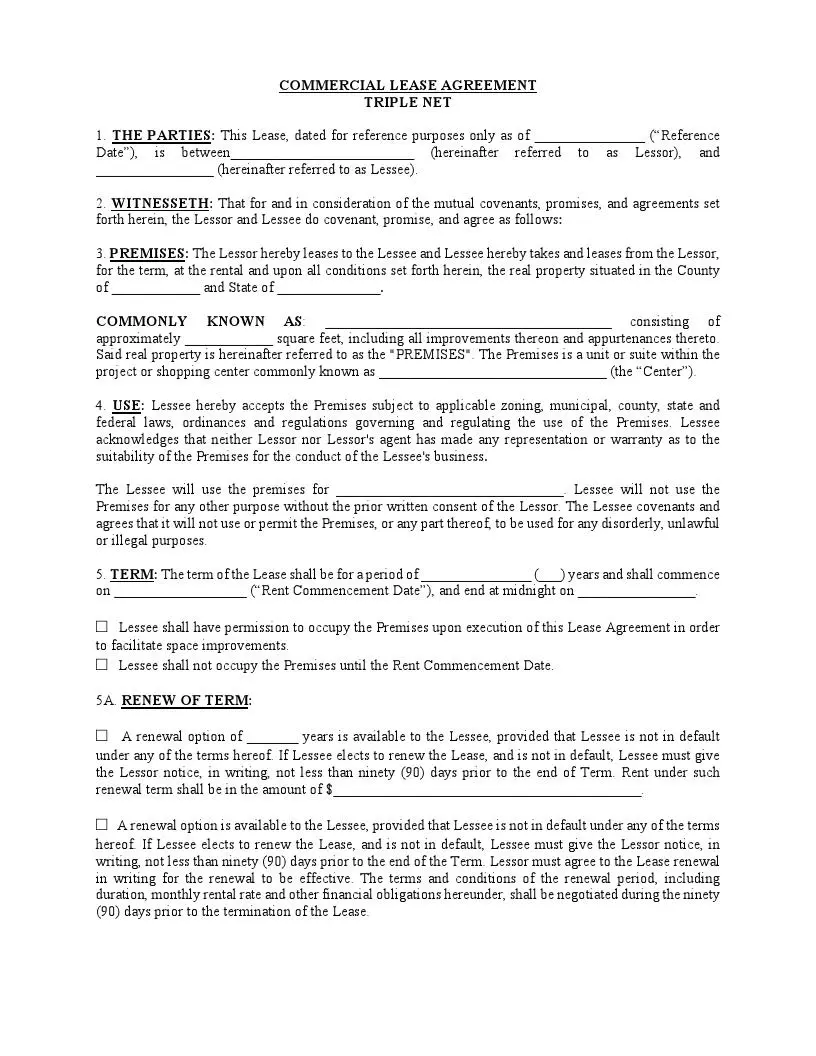
Triple net leased assets have become common investment opportunities for investors looking for a consistent stream of income with minimal risk. It has advantages for both renters and owners. In this setup, tenants have flexibility, allowing them to personalize their space without having to purchase personal property. Investors, on the other hand, can get long-term secure returns with appreciation.

Create a free high-quality Triple Net Lease Agreement online now!
Build Your Document
Answer a few simple questions to make your document in minutes
Save progress and finish on any device, download and print anytime
Your valid, lawyer-approved document is ready
. or download your Triple Net Lease Agreement as a PDF file Create a free high-quality Triple Net Lease Agreement online now! Table of ContentsA triple net lease (also known as NNN lease) is a lease agreement under which the tenant or lessee agrees to cover all of the estate’s costs such as commercial property taxes, building insurance, and upkeep. These charges are in addition to rent and utility fees, and in the absence of a triple, double, or single net contract, the lender is typically responsible for all payments.
Consider the following before using your commercial real estate property for a triple net lease investment:
A triple net lease is the polar opposite of a gross lease where property taxes, pensions, and house repairs are all paid for by the landlord. To offset these extra charges, the tenant’s annual rent is considerably higher. A gross lease can specify that the occupant is responsible for all utilities.
In real estate, a gross lease is the most common type of lease used by residential landlords. Leasing is paid in advance, and the landlord is responsible for all types of expenses. Other than utilities and mortgage payments, the three main recurring costs associated with purchasing property are building insurance, real estate property taxes, and regular maintenance.
In a net lease, the tenant is responsible for one or more of these fees and is liable for property taxes under a single net lease. On the other hand, a double net lease requires tenants to pay for both taxes and benefits. Meanwhile, a triple net or NNN lease makes the tenant responsible for all three.
Triple net leases are most often used for freestanding commercial buildings with a single occupant, although they may also be used for other sorts of properties. This type of lease usually has a 10-year or longer introductory period with escalating rent adjustments built-in. Though a single net lease or a double net lease almost have the same setup, only the triple net allows for more convenience on the part of the landlord. This is because the tenant will be responsible for paying for the following:
Commercial leases are mostly triple net with the square footage determining the amount of rent. A triple net lease is typically more cost-effective for industrial tenants than the gross rent model. In this case, the landlord deducts all running costs from the annual gross rent.
Good properties with low vacancy rates are appealing to tenants for a triple net lease because the burdens of taxes, insurance, and upkeep are shared by a larger group of fellow tenants. Renters pay a lower prorated share of the continuing fees while paying a lower monthly payment by spreading those expenses out to more tenants. The same applies to their CAM contribution.
To compute if a triple net lease could be right for your commercial real estate property, you can add your monthly property taxes and premiums to the total amount of rental square footage in the property, then split the number by the total amount of rental square footage in the building. Examine the more recent maintenance fees to see if they’re going to escalate over the lease term. Looking at expected fuel rates in the near future is a good way to make this decision. Divide the number by the rental square footage of the house after you’ve arrived at a rough estimate.
The method is pretty straightforward if you’re renting a whole building to one tenant. However, you must include the maintenance of common spaces such as restrooms, hallways, and the building lobby if you have several tenants. You also should calculate the annual expenses of cleaning, utilities, and equipment, and divide the cumulative number of rental square feet of the commercial property by the sum of annual expenses to get a fairly clear computation.
Investors and landlords reap from triple net leases in different ways. However, before entering into a triple net lease arrangement, all parties should understand the constraints of this form of a commercial lease. Economic components such as inflation, property repair expenses, and the number of tenants are just some of the factors to consider in determining if a triple net lease is right for your property.
The majority of triple net commercial lease arrangements are set up to guarantee long-term tenant occupancy (up to 20 years). This is beneficial to renters because it eliminates the cost and losses associated with a property that is vacant between tenants. Furthermore, you don’t have about as many landlord obligations for an NNN lease as you will for a traditional lease. However, when commercial property prices in the neighborhood rise, tenants who are locked into a long-term lease agreement may lose their ability to raise the rent, which can impact their income in the long run.
An NNN lease is typically cheaper than a standard lease (also called a gross lease) so the owner doesn’t have to think about any of the variable costs of buying the property. During the leasing period, the landlord estimates how much property taxes, insurance, and repairs would incur, and the savings are handed down to the tenant. Because of this, for the operations, upkeep, and unforeseen fees of the company location, tenants must have a good credit record. In an NNN lease, the tenant pays for all other fees on top of the rent.
An NNN lease deal is a relatively low-risk transaction for an investor since the occupant is responsible for almost all of the expenses involved with the property—from taxes and maintenance to daily repair costs.
When the underlying assets are leased, owners can use a 1031 tax-deferred exchange to buy in another triple-net-lease property without paying taxes. However, there’s also the possibility that a tenant will default. Investors can suffer losses as they are attempting to fill the vacancy.
An NNN lease is a good agreement to consider, but in the end, it is up to you to determine by weighing all the benefits and risks involved.
| Document Name | Triple Net Lease Agreement Form |
| Other Name | NNN Lease Agreement |
| Avg. Time to Fill Out | 16 minutes |
| # of Fillable Fields | 97 |
| Available Formats | Adobe PDF |
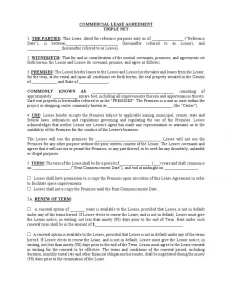
Step 1 — Download the Agreement Form.
Upon choosing a compatible format, download the commercial lease template to start editing.
Step 2 — Fill out the opening paragraph

Step 3 — Describe the premises and how they will be used.
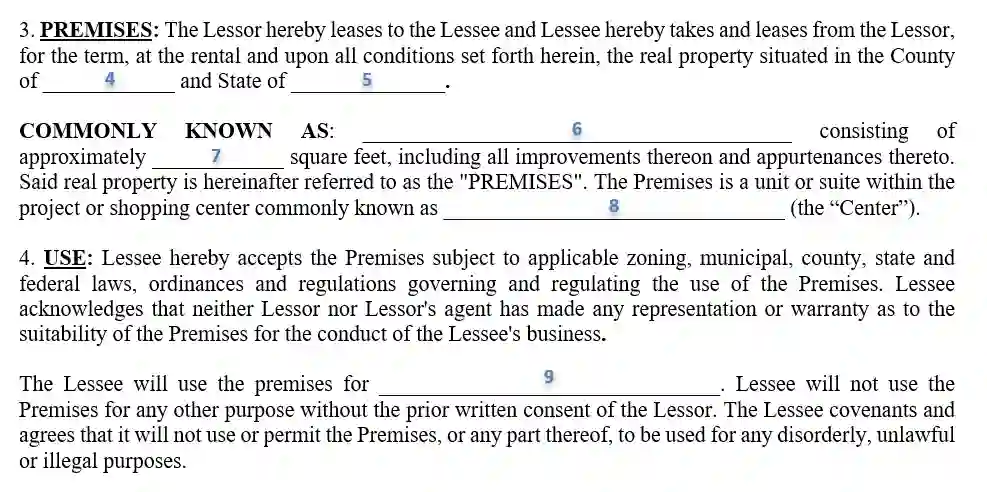
Step 4 — Discuss the terms of the agreement.

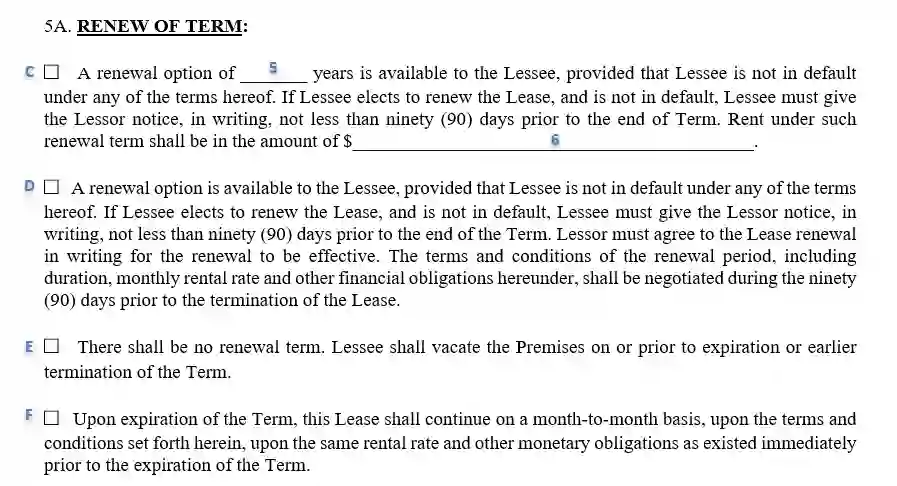
Step 5 — Finalize the financial aspects of the triple net lease.
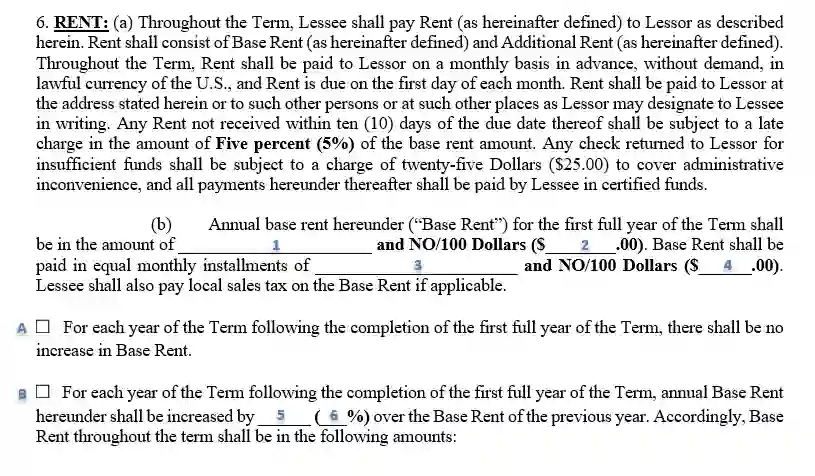
Step 6 — Add a rent computation for the NNN lease.
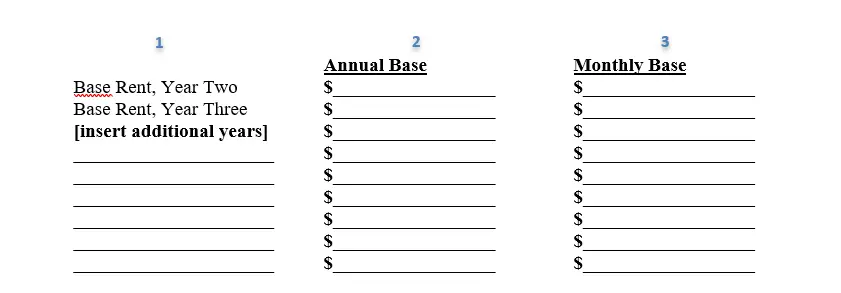
Refer to your computation on Step 4. Then, itemize the computation for the columns above.

As part of the triple net commercial lease, additional charges should also be discussed and clarified. Write the following information for the paragraph above:

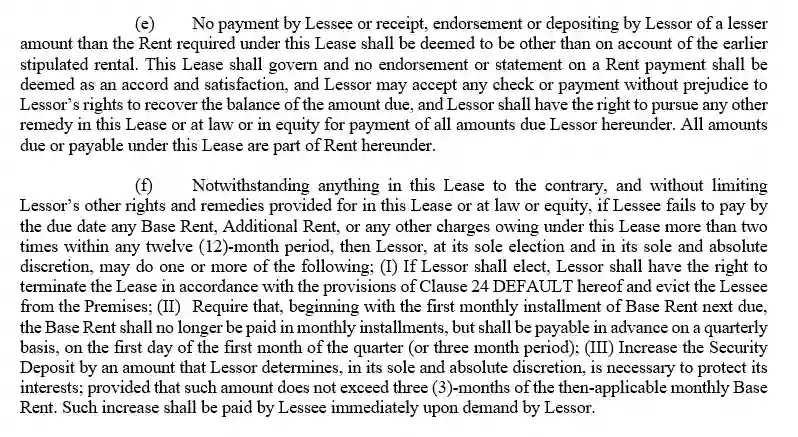
The paragraphs above explain the defaults pertaining to the financial aspects of the lease. It is best to read everything thoroughly before signing.
Step 7 — Secure a deposit.

Step 8 — Check the rest of the provisions
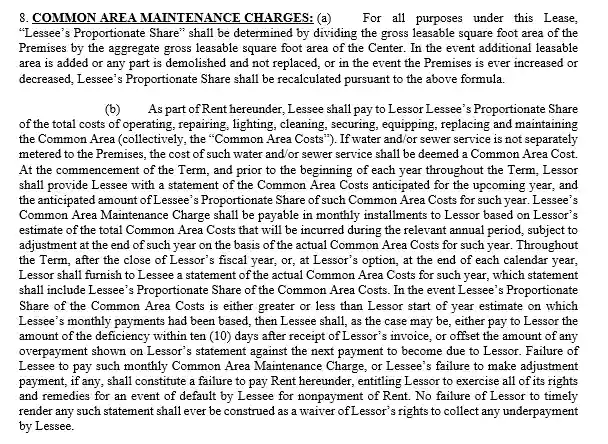
Section 8 discusses additional charges due to “Common Area Maintenance” (CAM), which is charged on a monthly basis.

In a triple net commercial lease, the tenant pays all the utility fees as explained above.

Likewise, payment of real estate taxes shall be shouldered by the tenant.
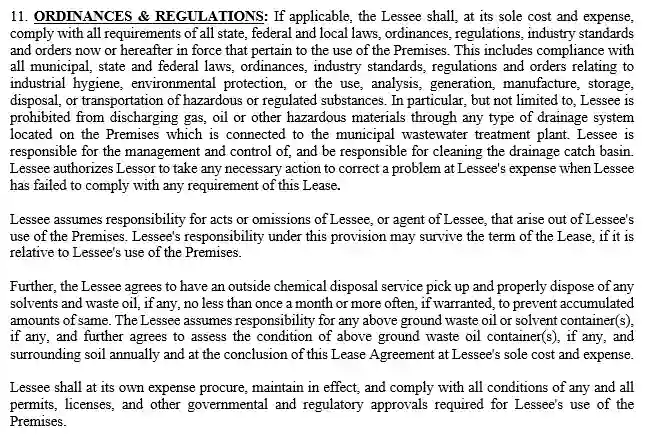
Section 11 above explains that the tenant must comply with all laws and regulations.
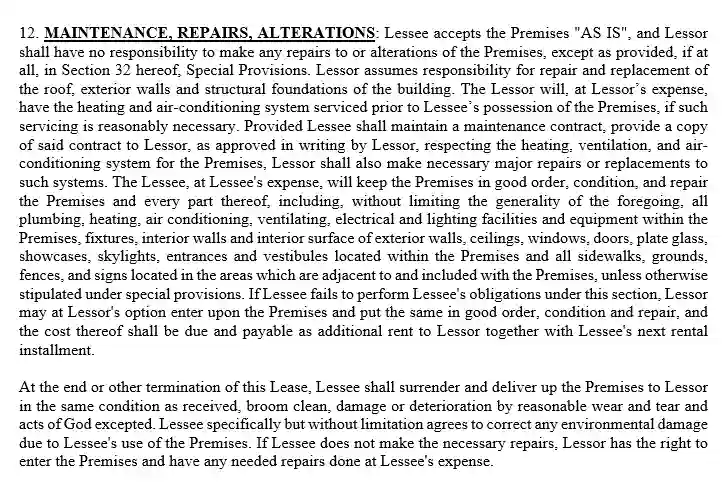

Section 12 details the rules and proper procedure for making repairs and alternations.
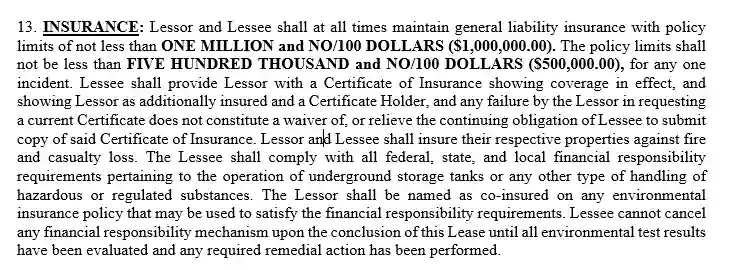
For section 13, the amount depends on the value of the property and should be checked with a real estate insurance agent. It would be best for the tenant to only pay for the minimum premium as part of the property’s insurance maintenance.
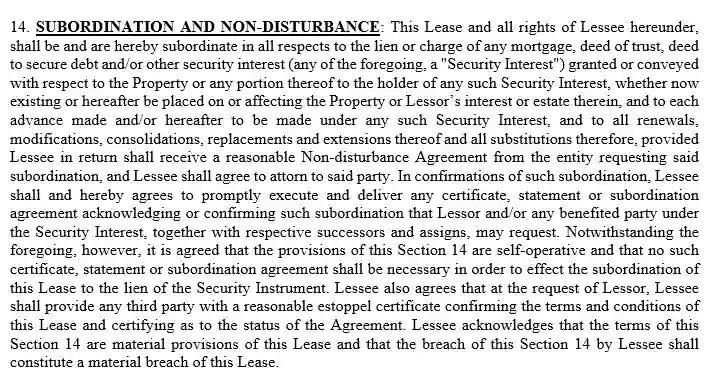
Section 14 protects both the landlord and tenant from any inconvenience or legal problems caused by either party.
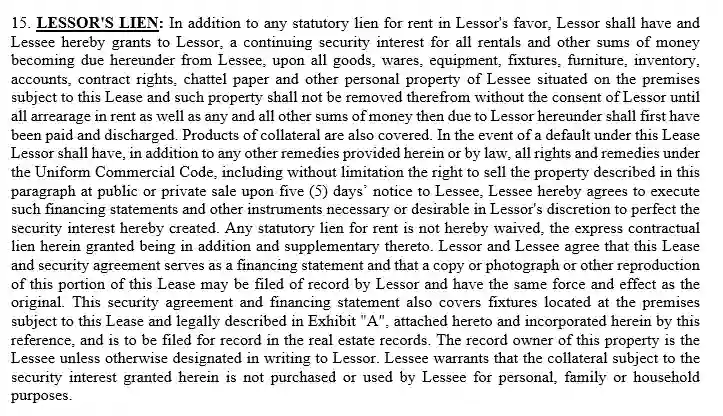
Section 15 protects the landlord from any financial obligations unpaid by the tenant. This gives the landlord the right to take possession of the tenant’s non-exempt property until the overdue balance is paid. The balance may also be taken from the security deposit.
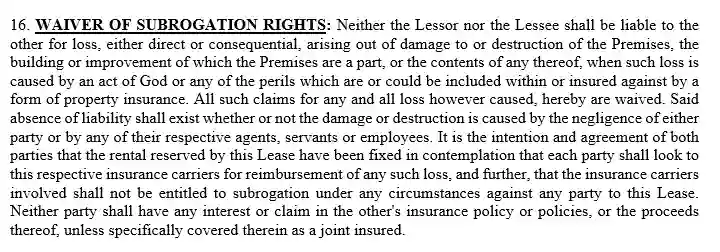
The above section discusses how both parties are not responsible for property destruction caused by “acts of God,” such as typhoons, earthquakes, and the like.
Step 9 — Complete the instructions for repair.
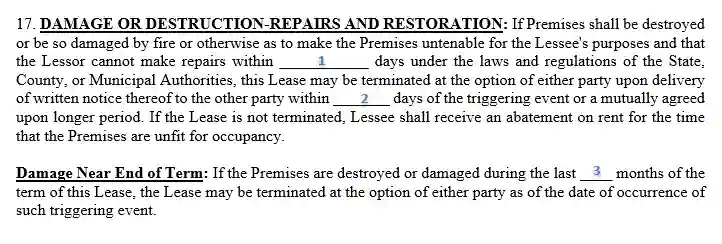
Step 10 — Add contact details.
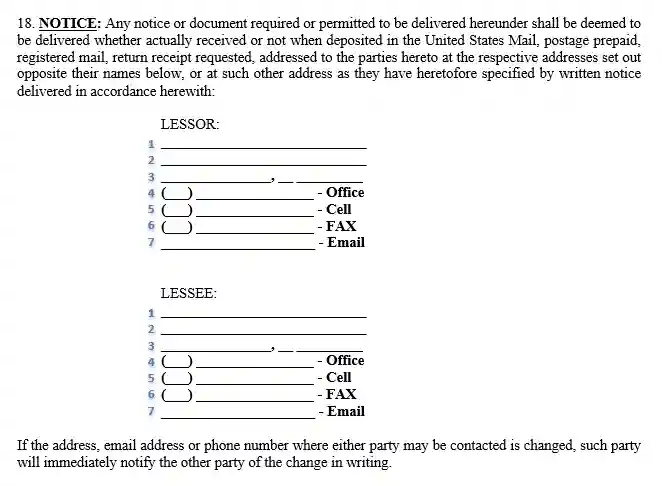
Complete the above information for both the lessor (landlord) and the lessee (tenant).
Step 11 — Read the standard provisions.
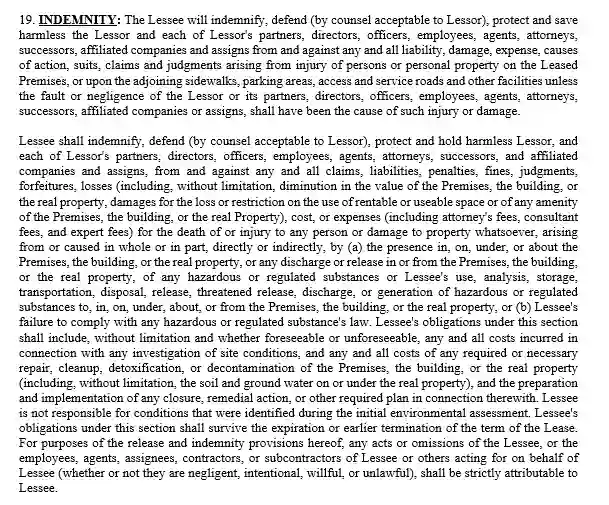
Section 19 explains that the tenant cannot make any legal claims against the landlord for situations that are out of his or her scope.
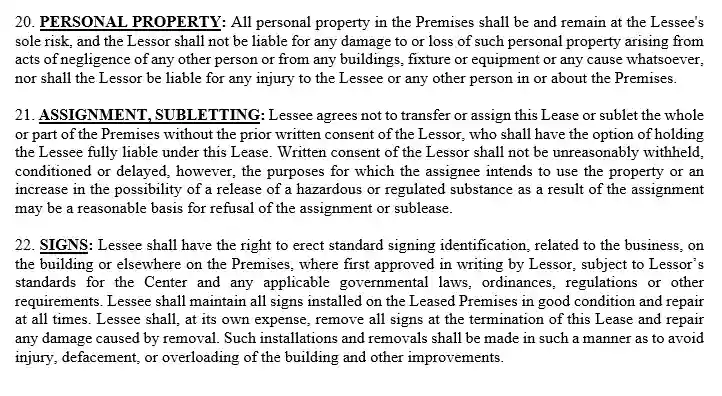
Sections 20 to 22 detail how the premises may be used.

The above explains what happens if the premises will be labeled “unusable”.
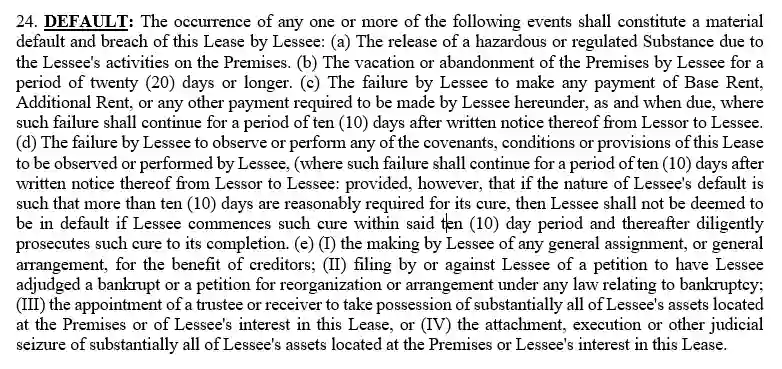
Section 24 lists all situations that will be equivalent to a “breach” in the contract.
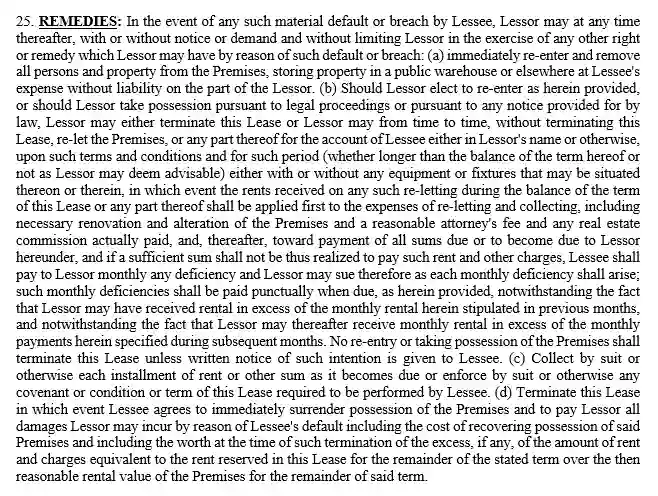
Following section 24, section 25 explains how breaches can be remedied.


Sections 27 to 28 explain the remaining guidelines before taking any action. 29, on the other hand, prioritizes the welfare of persons with disabilities who may visit the premises.
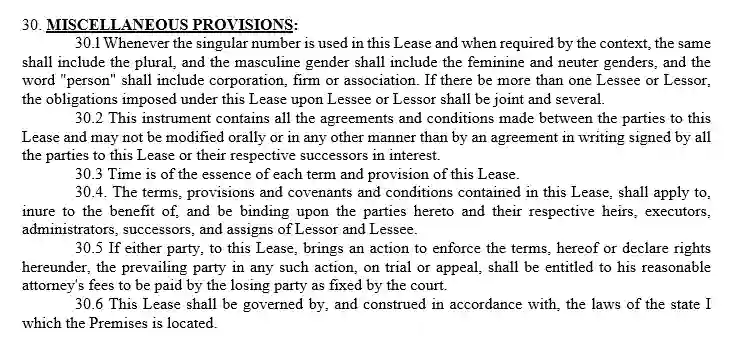
Section 30 discusses the legal basis for the enforcement of the triple net lease contract.
Step 12 — Summarize the obligations that come with the lease.

Step 13 — Choose what happens during an extraordinary situation
 an extraordinary situation filling out the triple net lease agreement" width="883" height="262" />
an extraordinary situation filling out the triple net lease agreement" width="883" height="262" />
Step 14 — Finally, sign the agreement.
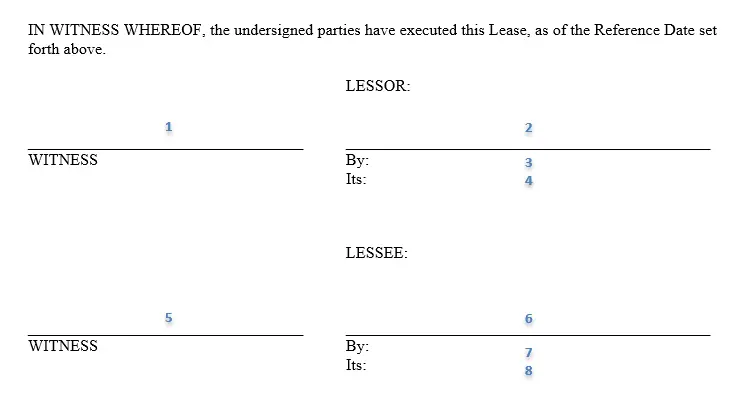
Repeat the same information for the tenant on blanks 5 to 8.
NNN leases can be tricky and detailed, but these are often the most convenient set up for the landlord and tenant. However, both parties must be aware of the consequences and responsibilities involved in this type of lease. Fortunately, Formspal’s free template discusses everything in detail to eliminate ambiguity in commercial NNN contracts.